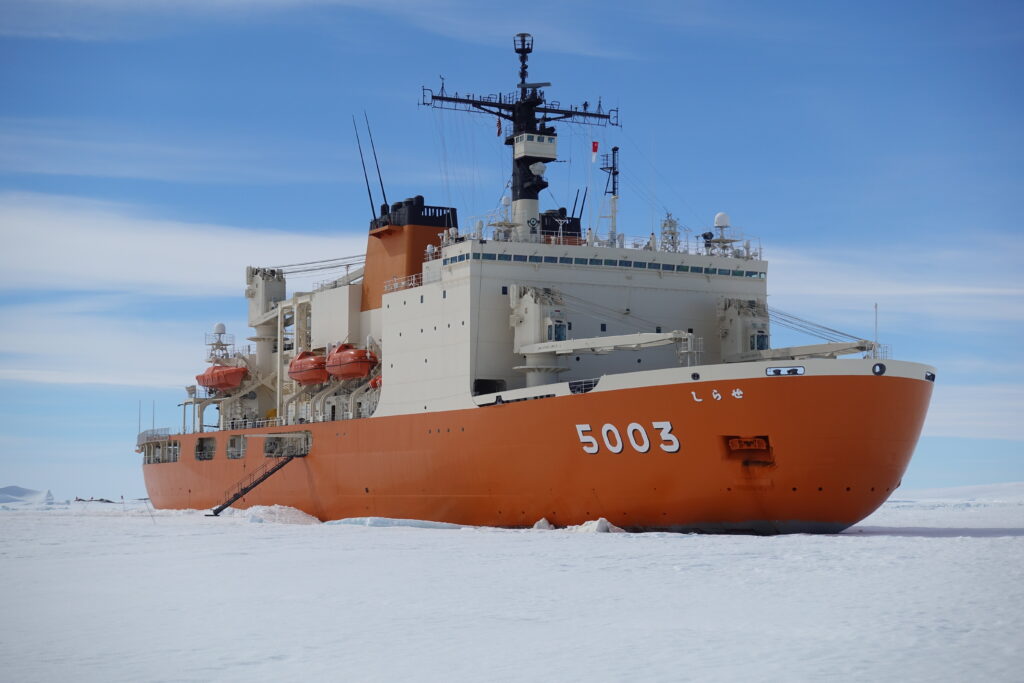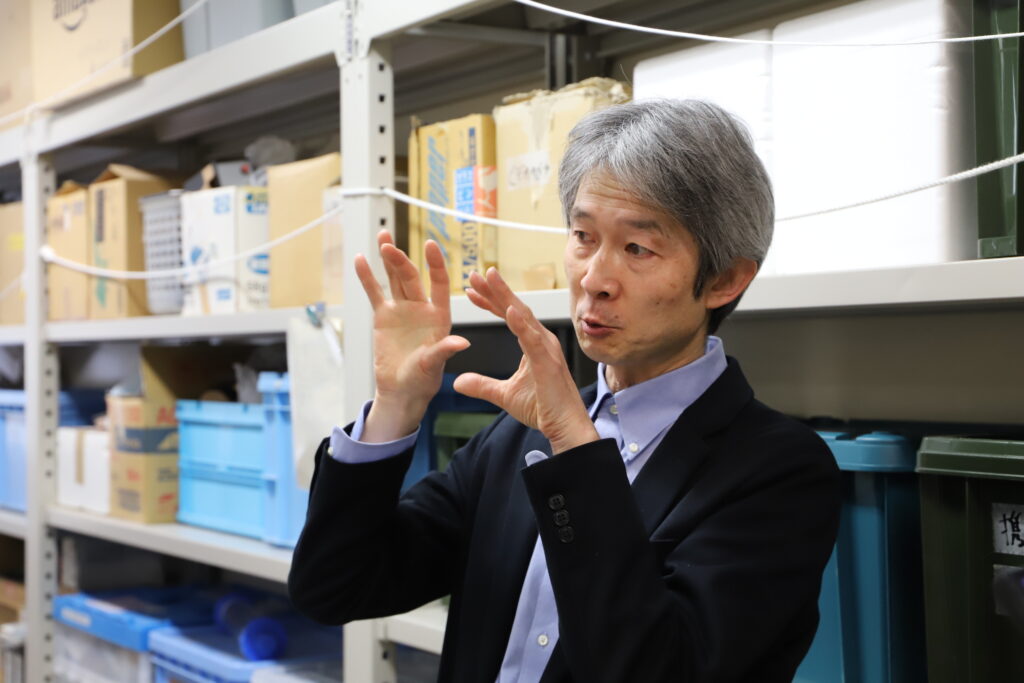This article first appeared in the special feature Understanding the Impact of Climate Change.
15 questions for climate change researcher Dr. Aoki (with subtitles).
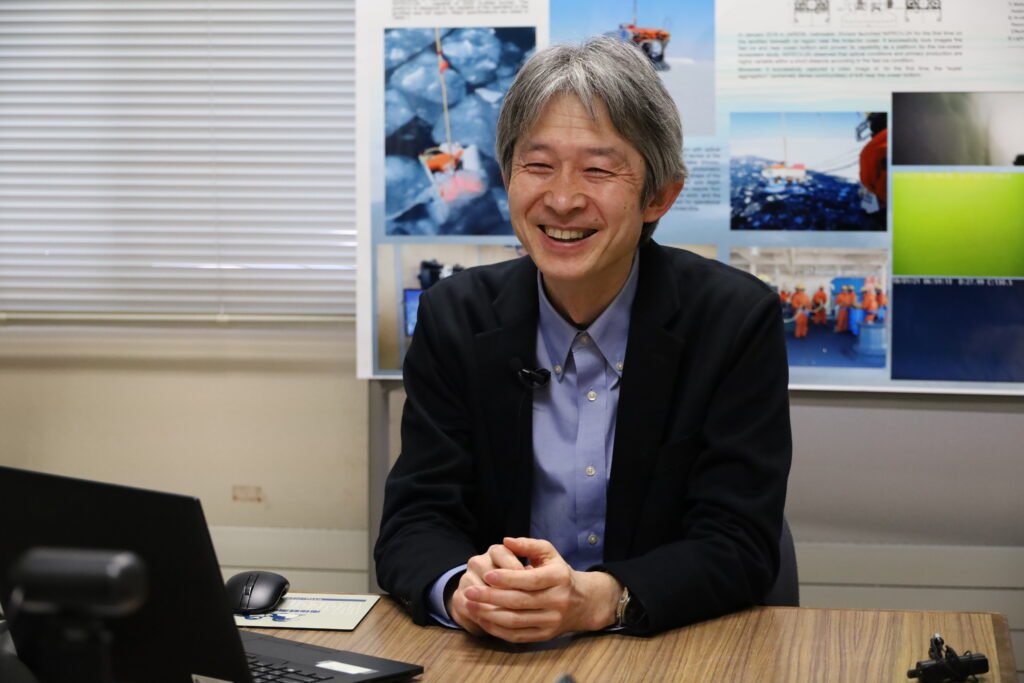
Associate Professor Shigeru Aoki
Institute of Low Temperature Science, Hokkaido University
(Photo by Yu Kikuchi).
The 61st Japanese Antarctic Research Expedition (November 2019 - March 2021) was the first in the world to successfully conduct intensive observations off the Totten Glacier in Antarctica, which had been considered difficult. Associate Professor Shigeru Aoki, the leader of the expedition, talked about the significance of Antarctic observation and its future prospects.
Rapid melting of Antarctic Glaciers: Elucidating how this occurs
Totten Glacier is one of the largest glaciers in a vast region called East Antarctica, where Japanese Syowa Station is also located. The study of rapid melting of glaciers in Antarctica has been focused on glaciers in West Antarctica, but the Totten Glacier in East Antarctica is now attracting attention as well. It is predicted that, if all the ice on Totten Glacier melts, the sea level will rise 3 to 4 meters above the current level. Despite its importance, the harsh natural environment of Totten Glacier has made it difficult to conduct research in this area. The 61st Expedition successfully conducted surveys off the Totten Glacier twice, once on the way to Syowa Station in Antarctica and once on the return trip, by the Japanese icebreaker Shirase.
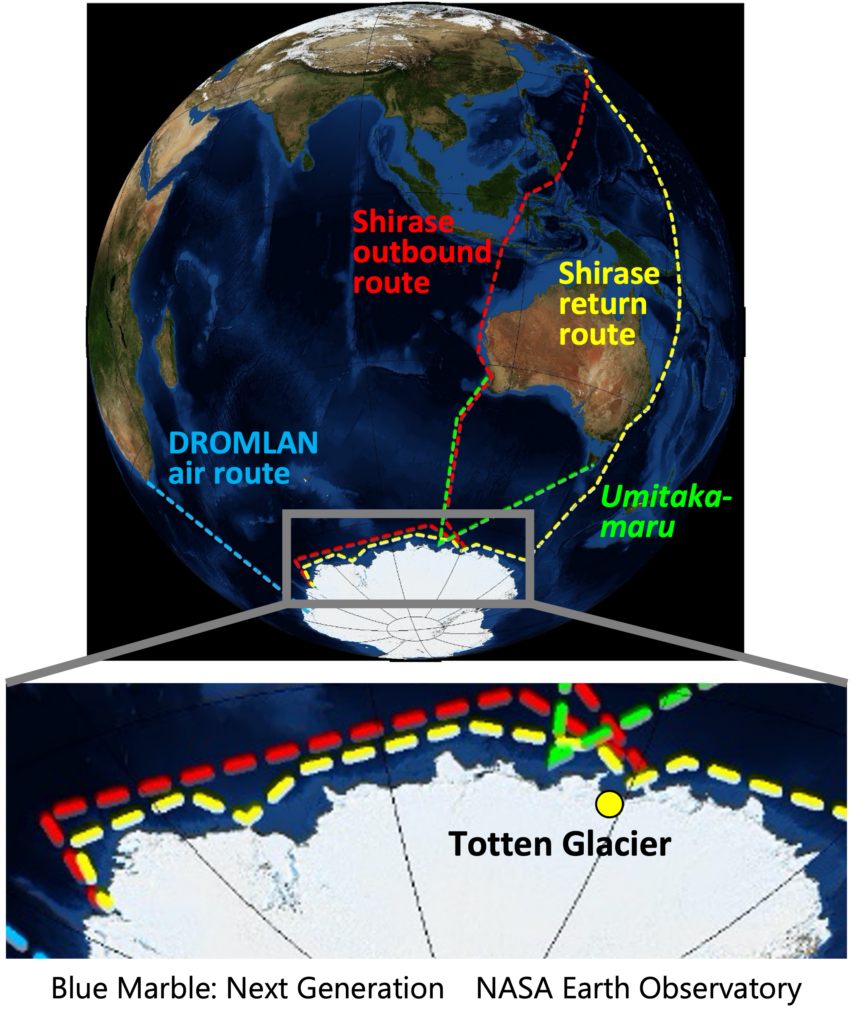
The 61st Expedition conducted surveys off the Totten Glacier on the way to Syowa Station and on its return trip, by the Japanese icebreaker Shirase.
Observations off Totten Glacier reveal how the sea melts ice
Ice shelves are areas where glaciers and ice sheets are pushed out from land into the sea. There is a huge whirlpool offshore of Totten Glacier which causes warm seawater to flow under its ice shelf. The 61st Japanese Antarctic Research Expedition revealed the connection between Antarctic ice and seawater: the warm seawater accelerates the melting of the ice shelves.
The melting of Antarctic ice was thought to take thousands or tens of thousands of years. However, Antarctic ice has been visibly decreasing on an accelerated scale over the last decades. Predicting the timescale of the melting of Antarctic ice cover in the future is one of the challenges of our current observations.
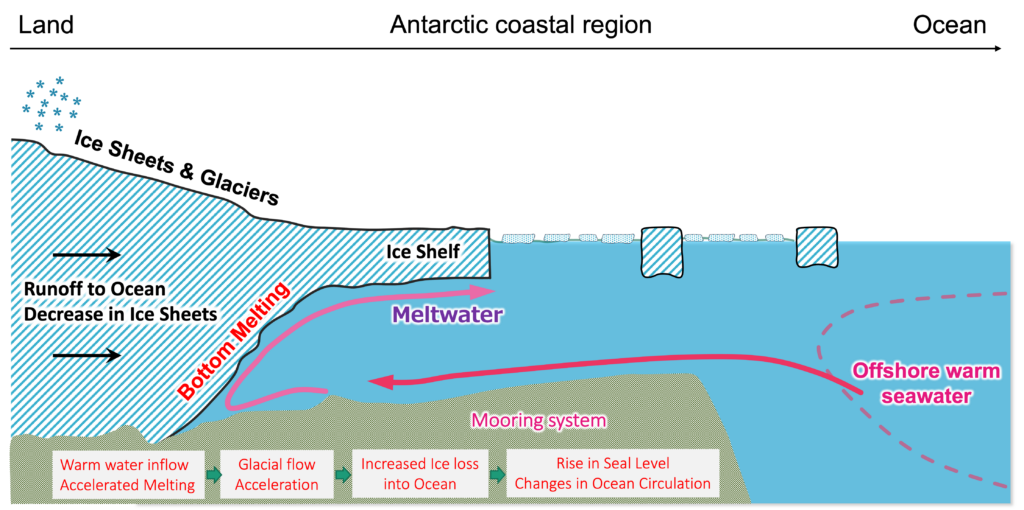
The warm seawater flows under the ice shelf through a deep trough connected with the offshore basin, accelerating the melting of ice.
Long-term field studies help predict Climate Change
We can use satellites to determine the extent and thickness of Antarctic ice to determine the amount of ice. However, to understand the mechanism by which Antarctic ice melts, we need to actually go into the field and study the seafloor topography near and beneath the ice shelf, as well as the temperature, salinity, and circulation of the seawater.
During the 61st Expedition's intensive observations off Totten Glacier, at multiple observation sites we used observation equipment to measure water temperature and salinity at various depths, and collected water samples. By studying the distribution of water temperature and salinity, we can predict the circulation of seawater and the presence of water masses and also know how the ocean heat approaches the ice.
The 61st Expedition also installed a monitoring system off Totten Glacier to periodically measure seawater temperature and salinity. Once this monitoring system is recovered, long-term data analysis will be possible. It is hoped that more detailed mechanisms of the melting of Totten Glacier will be revealed, leading to the prediction of climate change occurring on a global scale.
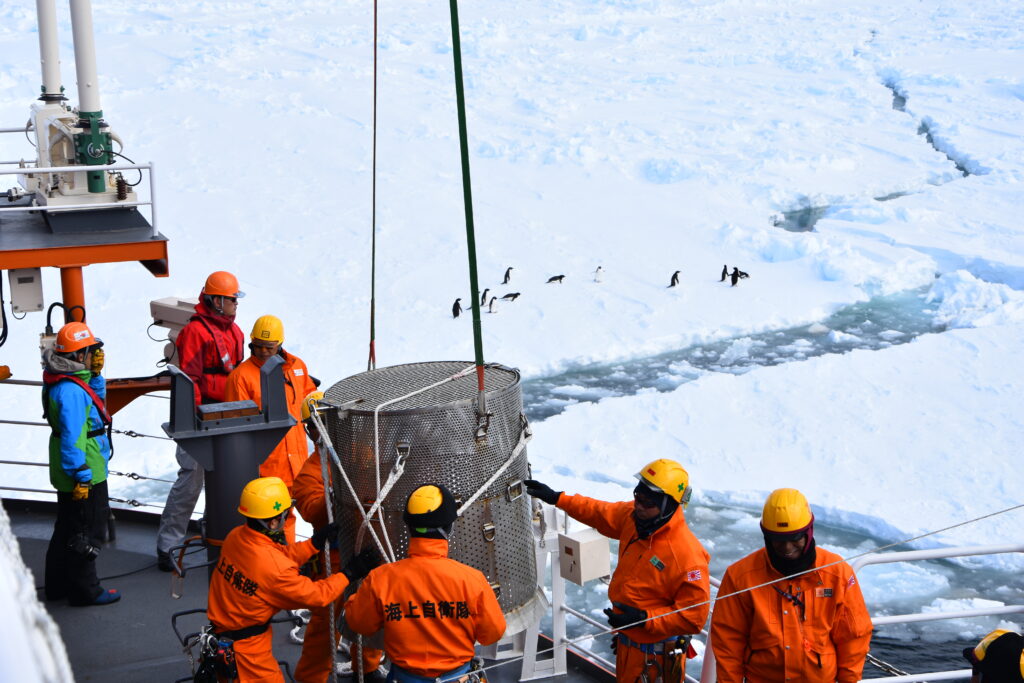
The expedition members lowering observation equipment into the sea (Photo provided by Shigeru Aoki).
Hokkaido University enables multifaceted field research
Two major teams from Hokkaido University participated in the key observations off the Totten Glacier: an ocean observation team and a glacier observation team. One of Hokkaido University's strengths is that it has a diverse team of staff, with expertise in various fields, who can go out into the field and conduct observations. One group had the skills to know the actual oceanic conditions surrounding glaciers in detail, while another group was skilled at drilling glaciers to study the glaciers themselves and the conditions beneath them. This combination is something that is not easily found anywhere else in the world. Furthermore, within the University, the glacier group and the ocean group are closely associated, and I think this is one of the strengths of Hokkaido University.
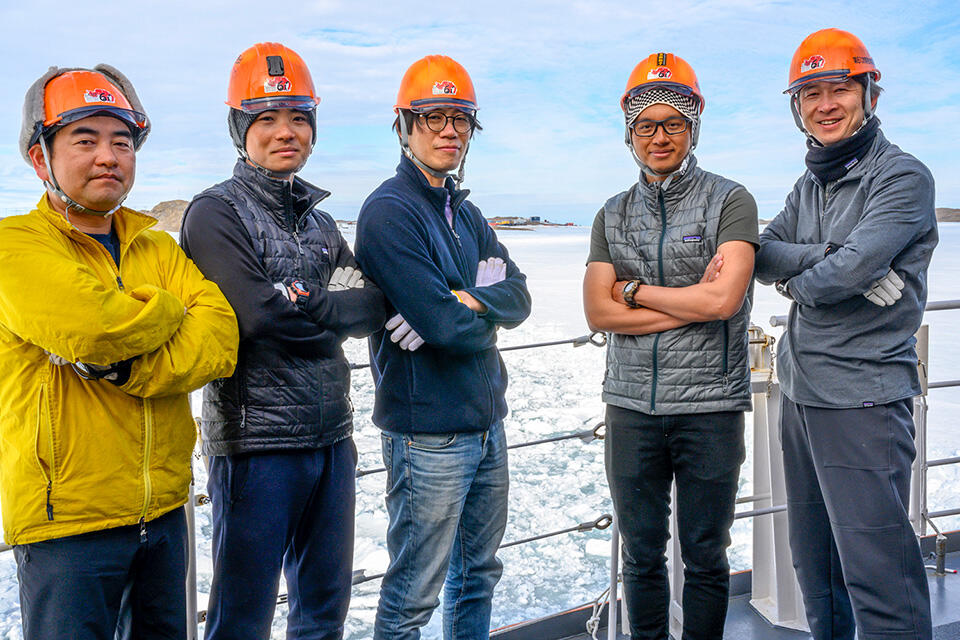
Five researchers who joined the 61st expedition from Hokkaido University (Photo provided by Shigeru Aoki) .
Research on Antarctic Glaciers advanced through international connections
Teams from the United States and Australia also participated in observations off the Totten Glacier.
The American group's idea was to fly a helicopter from the Shirase to observe the ocean. By using a helicopter, they were able to safely conduct observations in places they had never been before. In addition, our Japanese observers set up the observation equipment brought by the Australian group in the ocean and conducted observations.
Recently, it has been discovered that the glacier next to Totten Glacier is also melting. Australia is leading research at that location, with Japan providing support.
In the study of Antarctic glaciers and oceans, it is not easy to reveal the whole picture. However, we are sharing the work by utilizing the strengths and backgrounds of each country, and are promoting international joint observations.
Clarifying global ocean circulation from the study of the Totten Glacier
In addition to observations at Totten Glacier, I would like to uncover how changes are occurring in Antarctica as a whole.
We are gradually learning that warm ocean water is approaching from offshore Totten Glacier towards land, and that warm ocean water is also flowing in front of Showa Station. These are not separate phenomena - there must be a common mechanism that connects or influences them. What I would like to focus on in the future is to clarify how the warm water melts the Antarctic ice, and how this melted water changes the circulation in the deep ocean.
Future researchers will advance glacier observation technology
It is vital to continue long-term observations of Antarctic ice and ocean changes. There are still areas where the sea meets the ice that have not yet been observed. I hope that the next generation will continue our observations and at the same time invent new, more efficient and more powerful means of observation.
The ocean is a difficult place for information to be transmitted. However, once transmission signals are in the atmosphere, they can be exchanged via satellite communications. Recently, robots that can move autonomously in the ocean have been developed rapidly, expanding the range of observation.
I believe that these technological advances will make it possible to observe the boundary between the ice and the ocean in the future, and I hope that young people will take on the challenge of such new observations.
Going to Antarctica as the expedition leaderThe Expedition Leader's role is to lead the entire observation, to prepare for the observations, and to ensure that each observation proceeds smoothly. Since the main responsibilities of observation are carried out by the team members, what I tried to do as the leader was to make sure that each team member could demonstrate their individual abilities. I devoted myself to paying attention and making preparations to ensure that the observation would proceed smoothly. This was my first time as an Expedition Leader, and I am not sure if I did a good job. However, I am personally proud of the fact that we were able to obtain quite good results with the 61st Expedition, and I believe we did reasonably well. |
Written by Space-Time Inc.
Part of the special feature Understanding the Impact of Climate Change

